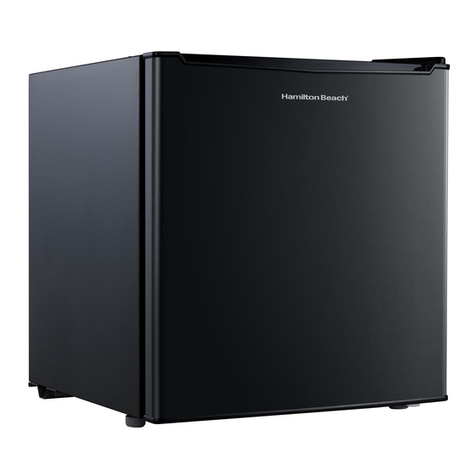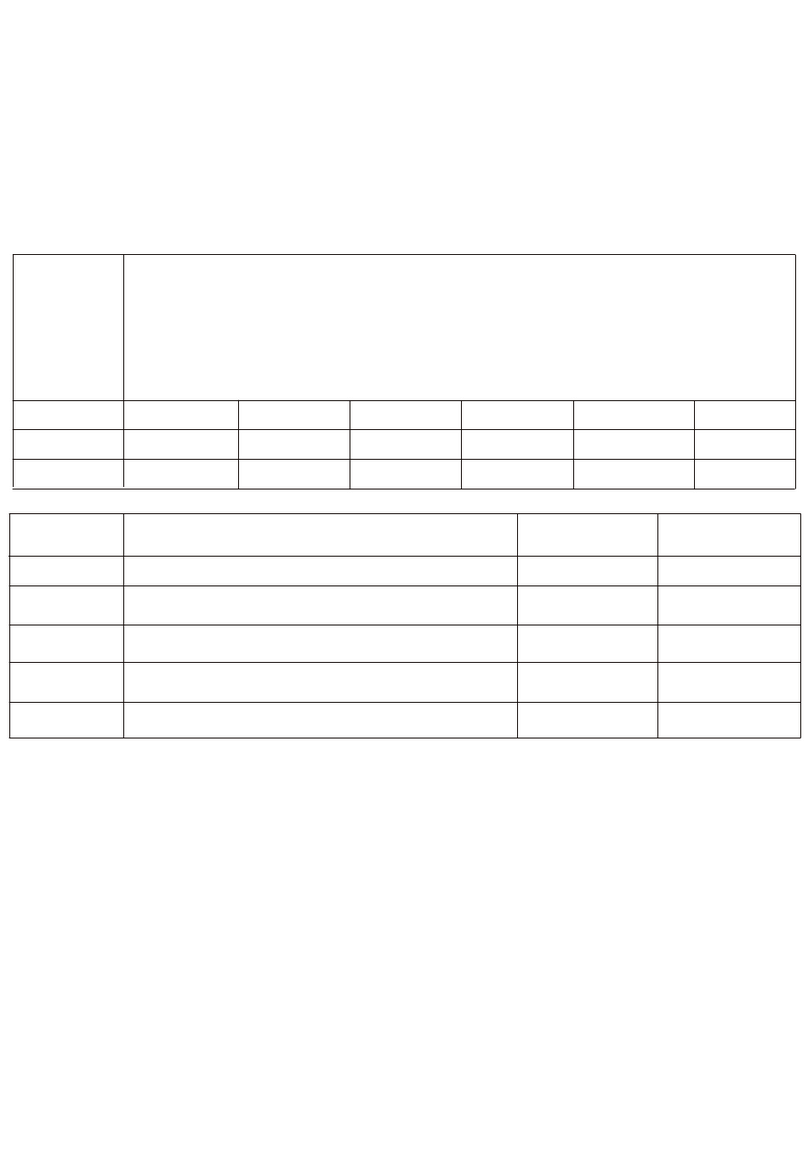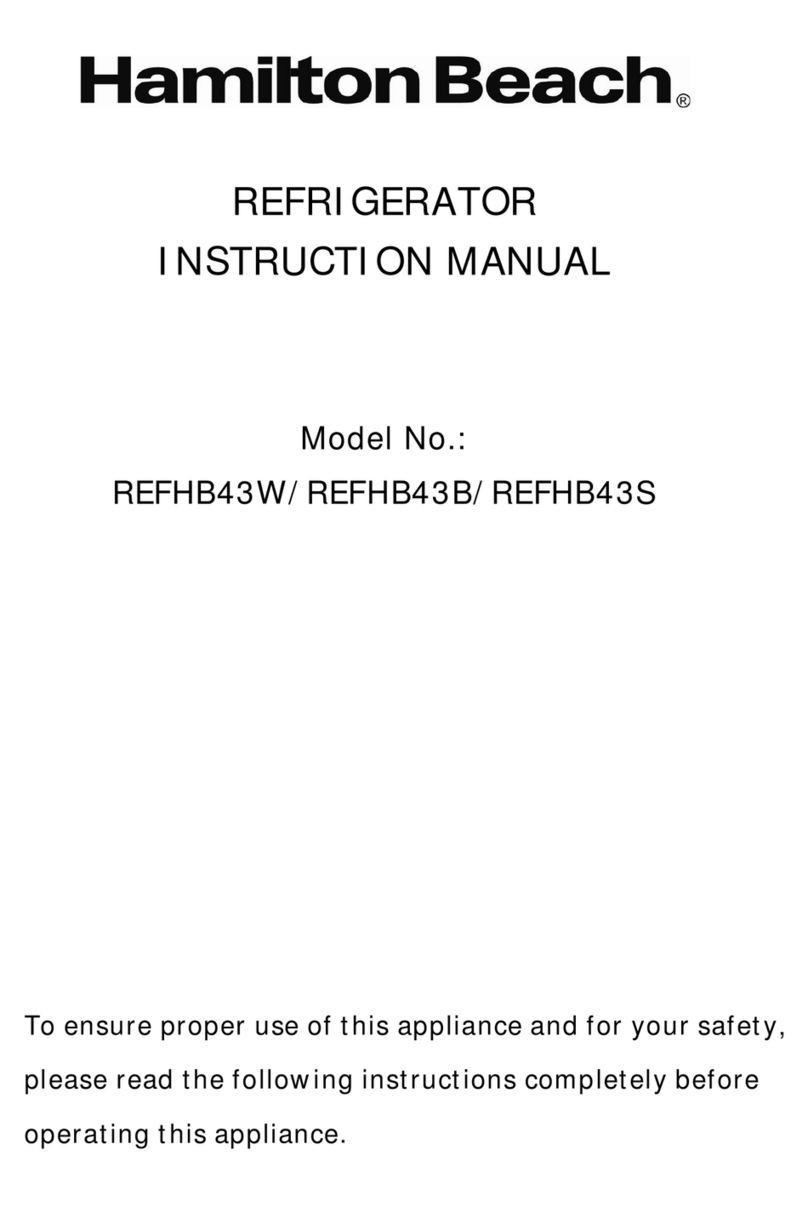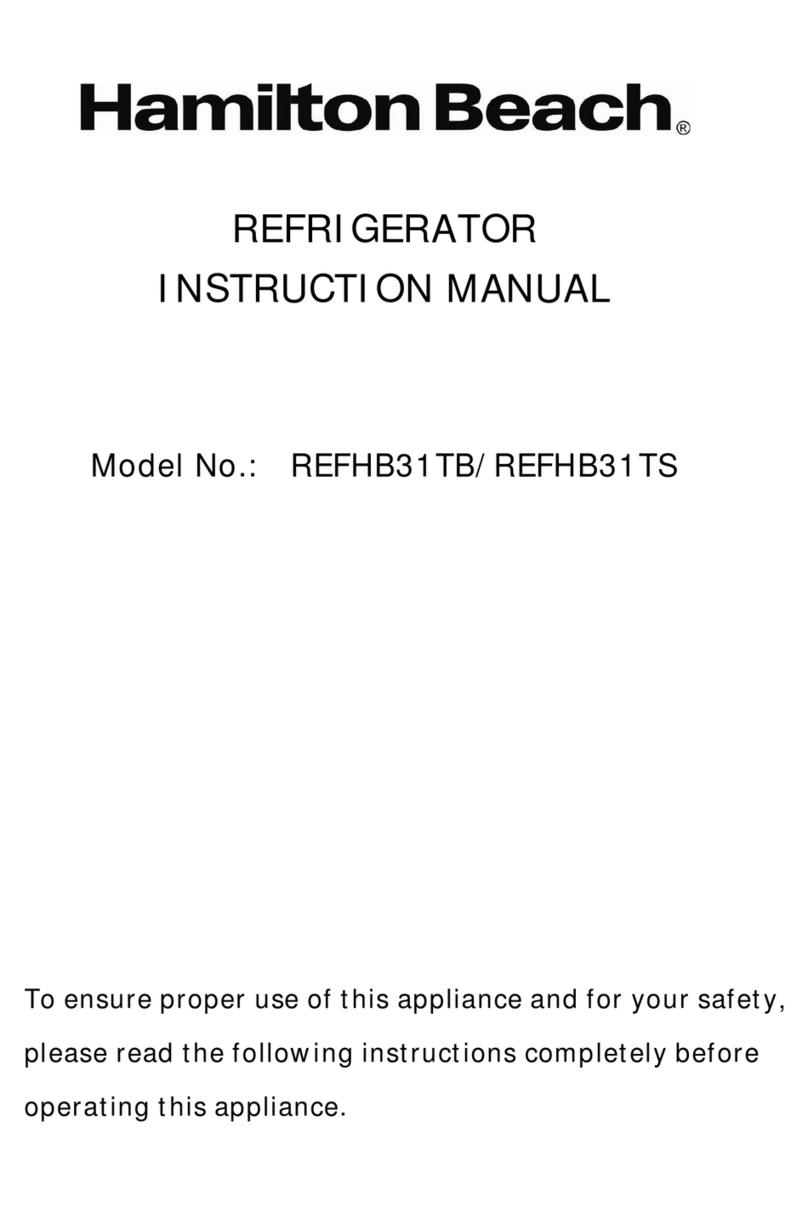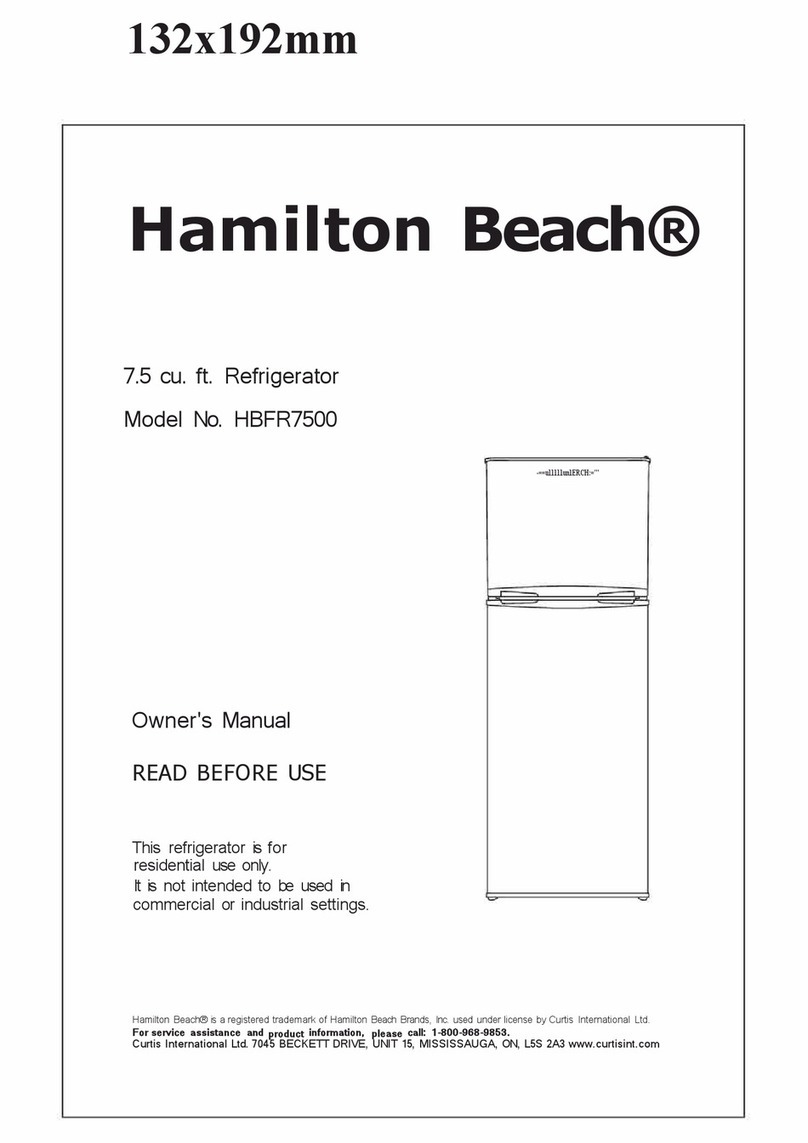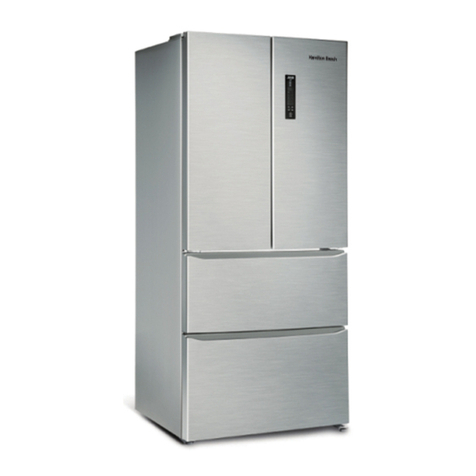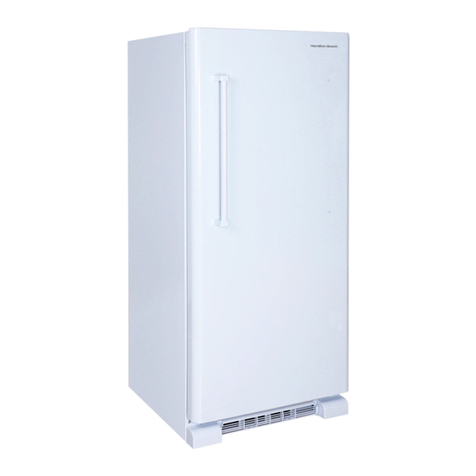Unpacking Your Refrigerator
1. Remove all packaging material. This includes the foam base and all adhesive
tape holding the refrigerator accessories inside and outside.
2. Inspect and remove any remains of packing, tape or printed materials before
powering on the refrigerator.
CAUTION
Risk of Fire or Explosion due to puncture of refrigerant tubing. Flammable
refrigerant used. Handle with care when moving refrigerator to avoid either
damaging the refrigerant tubing or increasing the risk of a leak.
Leveling Your Refrigerator
•Your refrigerator has two leveling legs which are located in the front bottom
corners of your refrigerator. After properly placing your refrigerator in
its nal position, you can level your refrigerator.
•Leveling legs can be adjusted by turning them counterclockwise to raise
your refrigerator or by turning them clockwise to lower your refrigerator.
The refrigerator door will close easier when the leveling legs are extended.
Proper Air Circulation
•To ensure your refrigerator works at the maximum efciency it was designed
for, you should install it in a location where there is proper air circulation,
plumbing and electrical connections.
•The following are recommended clearances around the refrigerator:
Sides……………4"
Top..................4"
Back.................4"
Reversing the Door Hinge
1. Remove any loose items in the refrigerator and carefully turn refrigerator on its
back.
2. Remove the top hinge cover using a at head screw driver and gently push
up.
3. Using a Phillips head screwdriver, loosen and remove the screws holding the
top hinge in place.
4. Remove top hinge and carefully lift off the door.
5. Remove the screw hole plugs from the opposite side and insert the plugs in the
screw hole openings of the just removed screws.
6. Remove both front leveling legs.
7. Loosen the screws holding the lower hinge bracket to the refrigerator and
remove screws and bracket.
INSTALLING YOUR REFRIGERATOR
4

